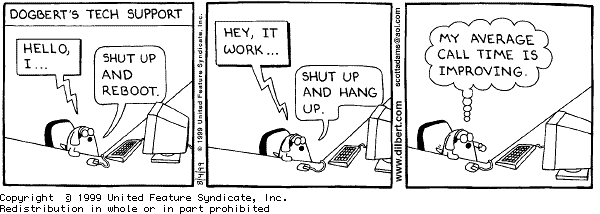Imagine receiving the parameters of your performance appraisal a week before your official performance review, and then being told you didn’t achieve your goals, emphasising the terrible performance and you find your bonus is only half of what it should be. Performance reviews have a name for being done poorly and half-heartedly.
The human resources department requires this as part of the employee’s file.
The boss has no idea what you’ve been working on.
The company needs to cut bonuses to survive.
Performance reviews and key performance indicators (KPIs) will make anyone want to run away. It’s challenging both for the employer and the employee – as they both need to protect their interests.
Understanding key performance indicators (KPIs)
In big corporates, C-level executives sit around a table and plan a strategic vision for the company. As part of this vision, they include products, resources and revenue goals. This is shared with middle management, who will in turn need to break down the goals into bite-sized chunks for the ‘grunt workers’ (e.g. software developers, engineers, waitrons, plumbing assistants). These bite-sized chunks should be measured so that everyone can report up the chain to the execs that the goals will be achieved.
KPIs are often introduced to align the company goals with those of the individual workers. This alignment means that each employee will be able to perform optimally to reach the company goal. For example:
The execs decide to launch a new software product that will increase their ROI and market share. The delivery manager will be measured on delivering on time and in scope. Business analysts/scrum master will be measured on accurately breaking down the vision into stories and tasks.
Having been a software developer for more than 10 years, I know it’s hard to set up good KPIs. However, it’s important that we measure what is important, as this will help with planning and strategic foresight decisions.
Measuring what matters
A few years ago, a power utility’s executive team had a strategic goal to put electricity in every home in a country. They communicated this to middle management and everyone in the company aligned to this goal. The goal was reached and top management received big bonuses for their effort. After receiving the large bonuses, many left the company to further their career. It was during this time that the outages started. After some investigation, it surfaced that no maintenance plans were in place for the long-term sustainability of power to the nation.
We have a few issues in this story that we can learn from.
Rewarding the process or the outcome
I was working for a large financial institution a few years ago. I was required by the product owner to take the financial model supplied by an actuary and plot the values on a chart. The goal was to see (visually) how much the customer would get on retirement. The issue was that the model wasn’t built to do that. This disparity is amplified by the silos found in corporate companies.
Shareholders are most interested in the outcome. Therefore, the end goals are presented to them with forecasts of revenue and market share. Staff on the ground are much more interested in the process of achieving these goals. Middle management, therefore, needs to find ways to merge and navigate communication and goal-setting for all stakeholders.
The process and the outcome are both important and we need both.
Measuring what is valuable – Goodhart’s law
But what happens when we focus so much on reaching our goals? Goodhart’s law explains that we could reach the goal but at the cost of our customers, sanity and business.
When a measure becomes a target, it ceases to be a good measure”
Goodhart’s law
Basically – people will find other wrong ways to achieve their goals. Here are some examples I have seen in my career:
- Call centre staff was measured on the number of sales calls made. They started being rude to customers and hung up on customers who were not interested in buying.
- Software developers were measured on lines of code. Everyone was adding lots of comments and adding line breaks everywhere to make the code more convoluted
- Software testers were given R5 for every bug found, and software developers R5 for every bug fixed. For some odd reason, more bugs were found and were quickly fixed by the developers. The company stopped the incentive.

The issue here is that the outcome of the goals was rewarded more than the process – the goals were reached, but at what cost? With Eskom, it was done at the cost of the national power grid and the economy. For businesses, the sacrifice could be revenue, market share, reputation, or staff (staff leaving, CCMA interventions and mental health issues).

How should I set up KPI performance goals?
On the top level, we know that all goals should be SMART – Specific, Measurable, Achievable, Relevant, and Time-Bound.
- Specific – Specify what the outcome should be and what the process should entail. For example, be specific that the line item is measured on errors in the live environment.
- Measurable – goals should never be measured on how someone ‘feels’ you performed. For example, if 5 issues are sent back for rework, then the maximum points allocated to the KPI/goal is x.
- Achievable – Making your goals bigger than life isn’t healthy for staff morale or for the company. If the outcome has a velocity of 20 points per sprint, then it wouldn’t make sense to have a goal of 500,000,000.
- Relevant – Imagine having to build a rocket ship, but you’re an accountant. Make sure the goals fit into your role. you should never have irrelevant goals in a KPI. It skews the performance
- Time-Bound – goals need to be achieved by a certain time and measured throughout this period. For example, it could be a deadline that everyone agreed upon that will span over a certain period.
How this plays out in each role, can differ from role to role and company to company.
Doing a 360
I’ve personally experienced favouritism in a job environment. Staff members delivered shockingly bad code, but were given large bonuses due to ‘political capital’. The best way to see if there is a broken relationship between the member of staff and the boss is to do a full 360 of all stakeholders. A member of staff needs to be measured by their boss, colleagues, clients and everyone with whom they interact.
Should a bonus be connected to a KPI?
No.
Goodhart’s law has taught us that if money is linked to a performance review or a KPI, then the staff member will do anything to achieve the goal – and sacrifice others or other vital values in the process.
Should self-development be added to the KPIs?
I absolutely believe that it should. A company should develop the individuals and leave them in a better state than what they arrived in. For this reason, I believe that 10-20% of the KPI should be about self and career development. This will be highly individualised, so staff members must be willing to tell you what they want to achieve in this field.
Conclusion
KPI can be complicated, and the employer needs to be ahead of the curve to be able to measure that which really matters. Employers should avoid linking personal KPIs and money, as this often leads to people sacrificing value for money.
Doing a full 360 to see if there are any issues in the work relationships can assist a business in fixing operational/human capital trouble.
Be sure that personal development is included in the KPIs, as an employer should leave employees better off when they leave.
Happy investing!



